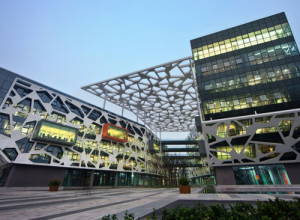A paramount certification authenticates the reliability of the individuals’ knowledge and capability. It’s a validation or a proof of learning. When it comes to third-party certification, it verifies that certificate holder has independently reviewed for his skills knowledge and key competencies. Third party certification is considerably more trustworthy than self-assessment, it is always more fostering of improvement than a regular learning process. This evaluation typically comprises comprehensive subject knowledge reviews, career competencies and inspect industry readiness thoroughly. Third-party certification involves assessment declaring that mentioned skill-set pertaining to the holder.
The label of Third-party certification is an additional validation on your degree or certificate, which authenticates that you have gone through all the possible parameters for the endorsement of your expertise and qualification. Because an abundant agreement of trust flows into the progression of certification. To better understand “Why” a Third-party Certification is needed, one must be also understand several other “Wh” of the same i.e. what, who, when, where.
What is the benefit of getting this certificate?
Third p arty certifications are industry accepted standards and successfully validate your proficiency in the qualified stream. Glimpse of Third party certification in resume can provide confidence to employer that you have a field focussed approach. These certifications bring a sound worth and the comprehensive experience and exposure. Regardless of this lack of complete trust on the working methodologies, origination of third party certification has revealed how much a well-structured authorization body can do to analyse the skill set of the people they are certifying. Third-party certification is not an agreement that an individual will deliver the excellence of service specified. However, third-party certification ensures confidence that the apprentice possesses required qualification and skills required to perform a particular work.
arty certifications are industry accepted standards and successfully validate your proficiency in the qualified stream. Glimpse of Third party certification in resume can provide confidence to employer that you have a field focussed approach. These certifications bring a sound worth and the comprehensive experience and exposure. Regardless of this lack of complete trust on the working methodologies, origination of third party certification has revealed how much a well-structured authorization body can do to analyse the skill set of the people they are certifying. Third-party certification is not an agreement that an individual will deliver the excellence of service specified. However, third-party certification ensures confidence that the apprentice possesses required qualification and skills required to perform a particular work.
Who should get this certificate?
 All the technical working professionals or interested candidates should get Third-party certification to evaluate the depth of knowledge they possess. It analyses depth of your knowledge on a particular module or software. If you want to evaluate yourself, must go for this certification test. It will definitely boost up your motivation and provide a brief of your said expertise. The third party certificate adds advanced recognition to your career, highlights your commitment to constant skill development, reflects the clarity of purpose in your selected career path and contributes a head-start in the highly competitive market.
All the technical working professionals or interested candidates should get Third-party certification to evaluate the depth of knowledge they possess. It analyses depth of your knowledge on a particular module or software. If you want to evaluate yourself, must go for this certification test. It will definitely boost up your motivation and provide a brief of your said expertise. The third party certificate adds advanced recognition to your career, highlights your commitment to constant skill development, reflects the clarity of purpose in your selected career path and contributes a head-start in the highly competitive market.
When it can be taken?
There are no definite eligibility criteria for taking up Third-party Certification. From a graduate to an experience working professional one can attempt for this. It is quite helpful to stand out in the crowd in this highly grown economy and market, which has raised a millions of individuals having same skill sets, educational backgrounds and experience. However, it can assure a complete conviction of knowledge and ability to perform a particular task or working on a module or software.
Where third-party certification can be available for CADD Centre’s certificate holders?
CCUBE is a kind of third-party certification focussed division of the CADD Centre group. It examines and validates participants on various grounds like awareness, skills, adaptability, and understanding to process. Ccube proficiency certifications are industry oriented and highly recognized for its key differentiators and high standards in the competitive job market. CADD Centre Certification Program offers skill based competency certification for individuals in a number of modules and softwares. These are diverse from a course or diploma certifications as Ccube determines individual readiness for job, high degree of specialism and deep expertise in the opted field. Further, such certificates expand the weightage of your resume. It highlights your key skills and offer a chance to walk with a competitive job market. You attempt for the online Ccube proficiency exam any time. Ccube certification benefits you to set a position on a better level than others as it is a factual authorization of your genuine expertise and competence.








